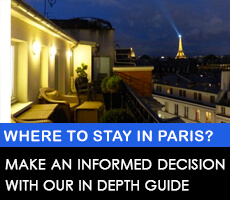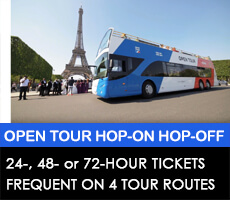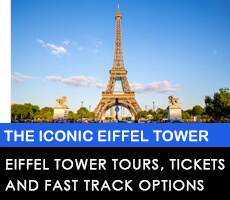Paris Catacombs tours and tickets
Tips on tours and skipping queues at Paris Catacombs
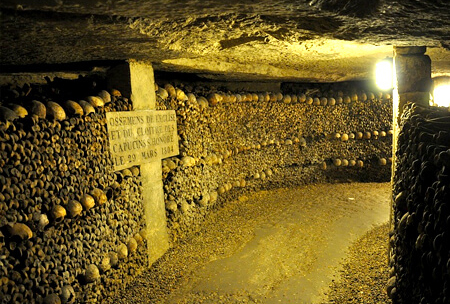
What are the Catacombs of Paris?
The Catacombs of Paris were originally limestone quarries, mined for the construction of the most famous buildings and bridges in Paris.
From the late 1700s the quarries were used to house bodies moved here from the overcrowded cemeteries of Paris.
The bones of exhumed bodies were stacked neatly in various rooms creating kilometres of walls composed entirely of human remains.
What to expect from a Paris Catacombs tour

During the pandemic it is recommended that tickets are booked in advance. Currently there is a limit of 200 people on site at any one time, so to guarantee your entry, booking in advance is essential.
Face masks are mandatory and you will need to show your Health Pass for entry.
The tour of the Catacombs is deep underground. The walking route is about 2km, about 1.25 miles and the average independent visit takes around one hour.
You will first descend 130 steps down to the Catacombs and then at the end it's an 83-step climb to street level. There are no lifts and the tour is not suitable for those without full mobility.
Then you wander the winding tunnels lined with the incredible collections of stacked bones and skulls. For those visiting independently you can hire an audio guide available in French, English and Spanish only.
On exiting the Catacombs you will be searched to make sure you have brought no bones with you. There are no toilets or facilities during the tour and note you may have been queueing for some time before entry.
There are guided tours you can purchase. Guided tours bought in advance have the major advantage of fast track skip the line entry and a guide that explains what you are seeing. As a result these tours tend to last longer than an independent visit.
Getting to Paris Catacombs
It is very easy getting to the Paris Catacombs. The Catacombs are right next to Denfert-Rochereau Metro (lines 4 & 6) and RER (Line B) train station. This is also where Orly airport buses terminate.
Tickets, facilities and entry queues
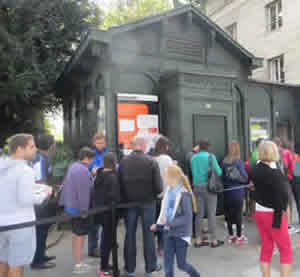
If you are visiting independently, you should be aware of the crowds.
The Catacombs are open daily from 9.45am to 8.30pm, except Mondays and public holidays. Last admission at 7.30pm. But take note! The tickets for the Catacombs are often sold out weeks in advance. Buy them in advance from the Catacombs website.
Advance tickets are not skip the line tickets, they just mean you have a reservation to get in. However, with timed tickets this means you will have a timeslot for your visit pre-booked, rather than waiting your turn to go in. The Catacombs do not allow more than 200 people in at a time.
There is no shelter around the square that the entrance queue snakes around and no seating.
There are no toilets or cloakroom/left luggage facilities available. Audio guides are available for a supplement.
The tour is unsuitable for people with heart or respiratory problems, those of a nervous disposition and young children.
Paris Catacombs tickets, guided tours and special access tickets
With timed entires now in place and limited ticket available on the door, it really is essential to book your tickets in advance.
We have tickets available for entry and a range of tickets that include guides and special access to certain areas of the site. Obviously, with a guide you will pay more, but you'll also experience more, the trip will likely take longer too as it is more in-depth.
PARIS CATACOMBS SKIP-THE-LINE TICKETS AND TOURS
|
|
|
Montparnasse Cemetery
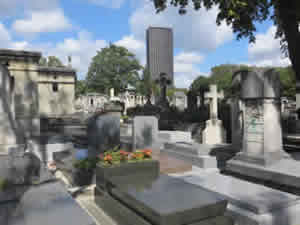
Just 5 minutes' walk from the Paris Catacombs is Montparnasse Cemetery.
There are 14 cemeteries in Paris proper, three of them – Pere Lachaise (in the east), Montmartre (in the north) and Montparnasse (in the south) attract visitors in numbers.
All the cemeteries are open to the public and free of charge to enter. Opening times are 8am to 6pm (5.30pm. November to mid-March).
The Montparnasse Cemetery is just west of Denfert Rochereau RER/Metro station where the Paris Catacombs are situated so it's worth taking a short walk to the cemetery after visiting the Paris Catacombs.
From the major road intersection in front of the Paris Catacombs just take the Rue Froidevaux heading northwest towards the Montparnasse Tower. You will soon come to the cemetery on the right hand side of the road.
This is a working cemetery, around 1,000 new burials every year, as old abandoned tombs are emptied and re-used. Perhaps the famous people here are not as famous as Pere Lechaise on the other side of Paris to an international audience, but there are still some gems if you look.
One example being Serge Gainsbourg, the singer and poet, his slab covered with flowers and metro tickets left by fans in reference to one of his best-known songs.


